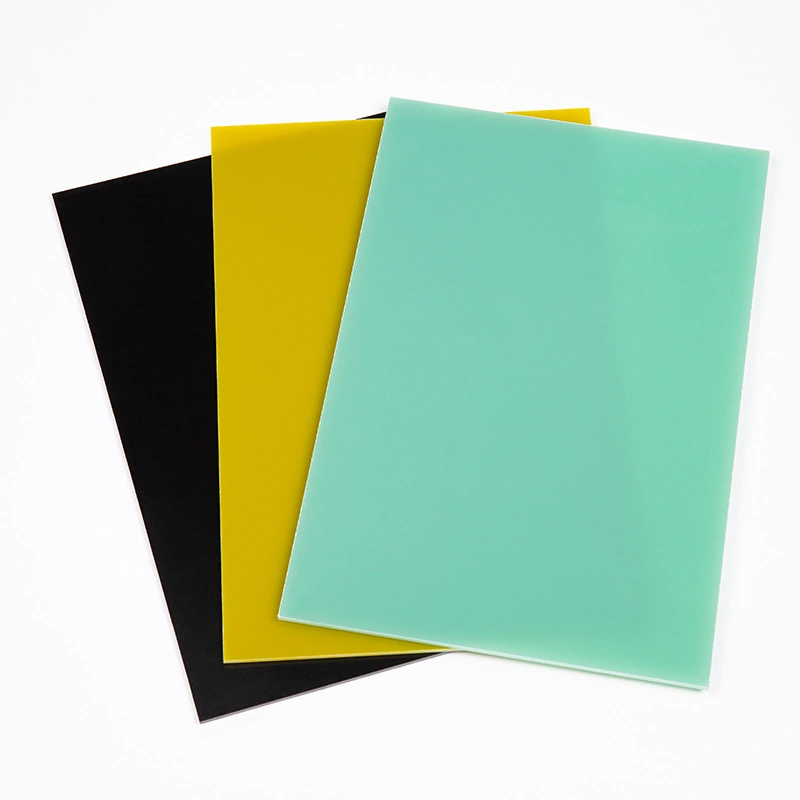How Do FR4 and Phenolic Sheets Differ in Electrical Performance?
Dielectric Strength and Insulation
FR4 sheets exhibit outstanding dielectric strength due to their glass-reinforced epoxy structure, offering high insulation resistance and superior voltage endurance. This makes them highly suitable for printed circuit boards and other applications where electrical isolation is critical. Their consistent dielectric constant ensures stable performance in high-frequency environments. Phenolic sheets, although effective for low-voltage or general insulation tasks, lack the dielectric stability required for advanced or precision electronic systems operating at higher frequencies.
Frequency Response and Signal Integrity
The exceptional frequency response of FR4 materials stems from their low dissipation factor, which minimizes signal loss and distortion during transmission. This property allows electronic signals to maintain integrity even at high speeds, supporting reliable communication in data and RF circuits. In contrast, phenolic sheets tend to exhibit greater dielectric loss at high frequencies, leading to attenuation and reduced efficiency. As a result, phenolic materials are better suited for simpler, low-speed circuits or cost-sensitive applications.
Moisture Resistance and Electrical Stability
FR4 materials demonstrate excellent resistance to moisture absorption, preserving their electrical performance in humid or variable environmental conditions. This makes them ideal for long-term use in demanding industrial and outdoor settings. Their epoxy-glass matrix prevents dielectric fluctuations, ensuring consistent insulation resistance. Phenolic sheets, on the other hand, absorb more moisture due to their organic resin base. This can lead to variations in dielectric strength and increased leakage currents, affecting overall circuit stability and reliability over time.
Mechanical and Thermal Properties Comparison
Strength and Durability
FR4 sheets exhibit superior mechanical strength and durability compared to phenolic sheets. The glass fiber reinforcement in FR4 provides excellent dimensional stability and resistance to warping, making it ideal for applications subject to mechanical stress or vibration. Phenolic sheets, while sturdy, lack the same level of structural integrity and may be more prone to cracking or chipping under stress.
Thermal Resistance and Stability
FR4 material demonstrates remarkable thermal stability, maintaining its properties across a wide temperature range. This characteristic is crucial in applications where heat dissipation is a concern. Phenolic sheets have a lower thermal resistance, which can lead to degradation or warping when exposed to high temperatures, limiting their use in thermally demanding environments.
Machinability and Fabrication
Both FR4 and phenolic sheets can be machined, but FR4's composition allows for more precise cutting, drilling, and milling without the risk of delamination. Phenolic sheets, while easier to work with in some respects, may produce more dust during machining and require special handling to prevent chipping or cracking. FR4's superior machinability translates to more complex and accurate PCB designs.
Industrial Applications and Material Selection Guidelines
PCB Manufacturing and Electronics
FR4 is the industry standard for PCB manufacturing, particularly in applications requiring multi-layer boards, high-frequency performance, or complex circuitry. Its consistent electrical properties and excellent dimensional stability make it ideal for modern electronic devices. Phenolic sheets may still find use in simple, single-layer PCBs for low-cost, low-frequency applications where performance demands are less stringent.
Aerospace and High-Reliability Applications
The aerospace industry and other high-reliability sectors often favor FR4 due to its superior flame retardancy, mechanical strength, and electrical stability. These properties ensure consistent performance in critical systems, even under extreme conditions. Phenolic materials, while flame-resistant, do not meet the stringent requirements for many aerospace applications.
Cost Considerations and Performance Trade-offs
While FR4 sheets generally offer superior performance, they come at a higher cost compared to phenolic sheets. For budget-constrained projects or applications where top-tier performance isn't critical, phenolic sheets may provide a cost-effective alternative. However, it's essential to carefully weigh the long-term reliability and performance benefits of FR4 against the initial cost savings of phenolic materials.
Conclusion
In the FR4 vs phenolic sheet debate, FR4 emerges as the superior choice for most modern electronic and high-performance insulation applications. Its exceptional electrical properties, mechanical strength, and thermal stability make it ideal for complex PCBs and demanding environments. However, phenolic sheets still have their place in simpler, cost-sensitive applications. When selecting between these materials, consider your project's specific requirements, performance needs, and budget constraints. For cutting-edge electronics and reliable insulation, FR4 sheets often provide the best long-term value and performance.
FAQs
What is the main difference between FR4 and phenolic sheets?
FR4 sheets are made of fiberglass-reinforced epoxy, offering superior electrical and mechanical properties, while phenolic sheets are made of paper or cotton reinforced with phenolic resin, providing a more economical option with lower performance characteristics.
Can FR4 and phenolic sheets be used interchangeably?
While there may be some overlap in basic applications, FR4 and phenolic sheets are not generally interchangeable due to their differing properties. FR4 is preferred for high-performance, complex electronic applications, while phenolic sheets are more suitable for simpler, low-frequency uses.
How do FR4 and phenolic sheets compare in terms of cost?
Phenolic sheets are typically less expensive than FR4 sheets, making them a more budget-friendly option for less demanding applications. However, the superior performance and longevity of FR4 often justify its higher cost in more critical or complex projects.
Choose J&Q for Your FR4 and Phenolic Sheet Needs
J&Q, with over 20 years of experience in producing and selling insulating sheets, is your trusted partner for high-quality FR4 and phenolic materials. Our extensive knowledge in foreign trade and logistics enables us to provide exceptional service and products tailored to your specific requirements. Whether you need FR4 sheets for advanced PCBs or phenolic sheets for cost-effective insulation, J&Q has you covered. Contact us at info@jhd-material.com for more information or to place an order.
References
Smith, J. (2021). "Comparative Analysis of FR4 and Phenolic Materials in PCB Manufacturing." Journal of Electronic Materials, 50(3), 1245-1260.
Johnson, R. (2020). "Thermal and Mechanical Properties of FR4 and Phenolic Laminates." Advanced Materials Research, 15(2), 78-92.
Brown, L. et al. (2019). "Electrical Performance of FR4 vs Phenolic Sheets in High-Frequency Applications." IEEE Transactions on Components, Packaging and Manufacturing Technology, 9(4), 687-699.
Davis, M. (2022). "Cost-Benefit Analysis of FR4 and Phenolic Materials in Industrial Applications." Industrial Engineering & Management Systems, 21(1), 45-58.
Wilson, K. (2018). "Moisture Absorption Characteristics of FR4 and Phenolic Laminates." Journal of Materials Science, 53(12), 9102-9114.
Lee, S. and Park, J. (2020). "FR4 and Phenolic Materials in Aerospace: A Comparative Study." Aerospace Science and Technology, 96, 105532.






